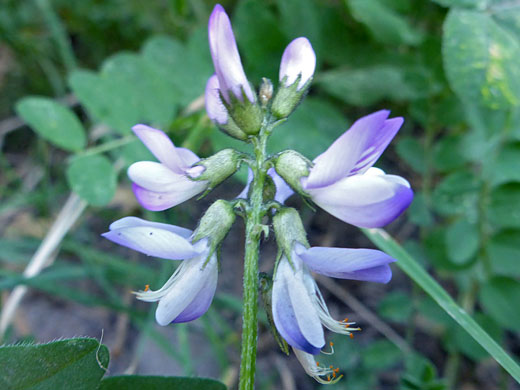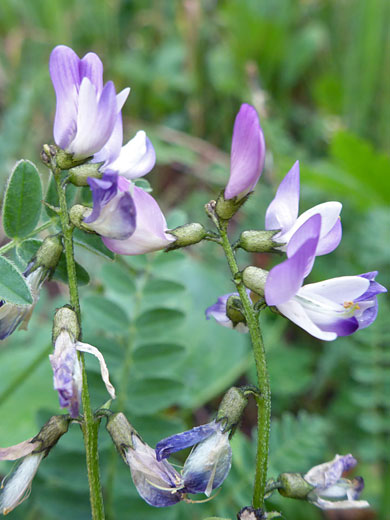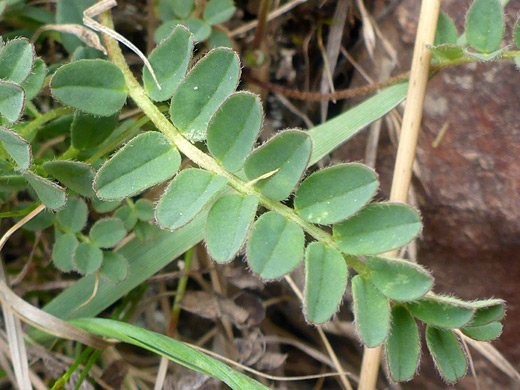
Hairy, light green calyces and white/purple flowers - astragalus alpinus, Titcomb Basin Trail, Wind River Range, Wyoming
Common name:
Alpine milkvetch
Family:
Scientific name:
Astragalus alpinus
Main flower color:
Range:
The Rocky Mountain states, and some adjacent areas
Height:
Up to 18 inches
Habitat:
Streambanks, moist meadows, woodland, tundra, scree slopes; from 7,000 to 11,500 feet
Leaves:
Evenly pinnately compound, up to 5 inches long, with between 15 and 35 ovate leaflets, each up to 0.7 inches long
Season:
June to August
The five-lobed calyx of astragalus alpinus is light green, with a sparse to moderate covering of flattened black hairs, while the petals are bicolored; variously white, pink or purple. The banner petal is light lavender-purple, white at the base and crossed by darker lines, while the two wing petals are white. The keel is purple at the tip, white below. The colored parts of the petals wither to dark blue. Flowers are produced in a loose cluster of up to 30 heads, that elongates as it matures. Fruits are pendent green pods, less than one inch long, covered by dark hairs. The lower margin of the pod is grooved.
Leaflet edges are ciliate, and the undersides sparingly hairy; the upper surfaces are glabrous. Stems generally grow sideways, staying close to the ground. The flowering stalks are leafless. This species is the most common milkvetch of the Rocky Mountains, and is also found at similar latitudes all across the globe.
Leaflet edges are ciliate, and the undersides sparingly hairy; the upper surfaces are glabrous. Stems generally grow sideways, staying close to the ground. The flowering stalks are leafless. This species is the most common milkvetch of the Rocky Mountains, and is also found at similar latitudes all across the globe.
All Contents © Copyright The American Southwest | Comments and Questions | Contribute | Site Map






